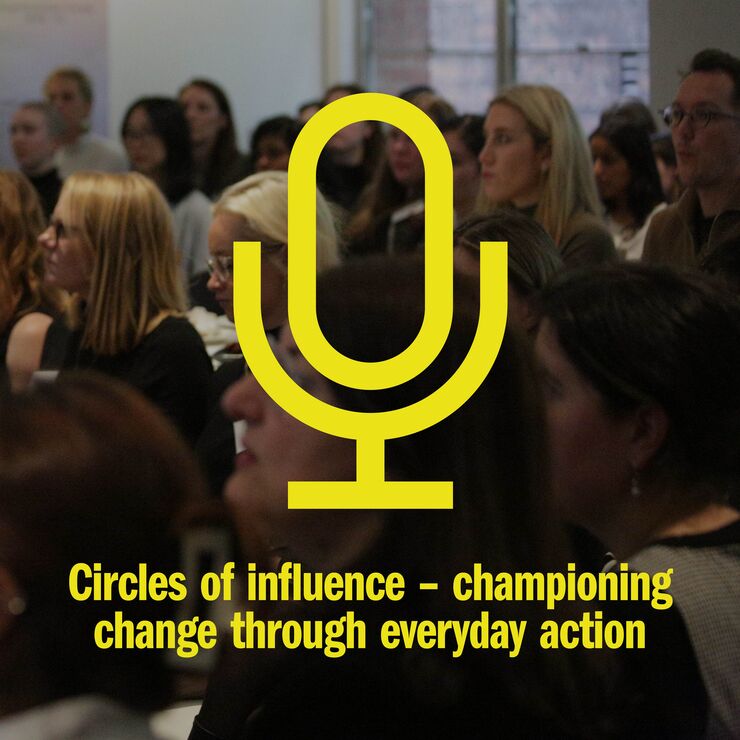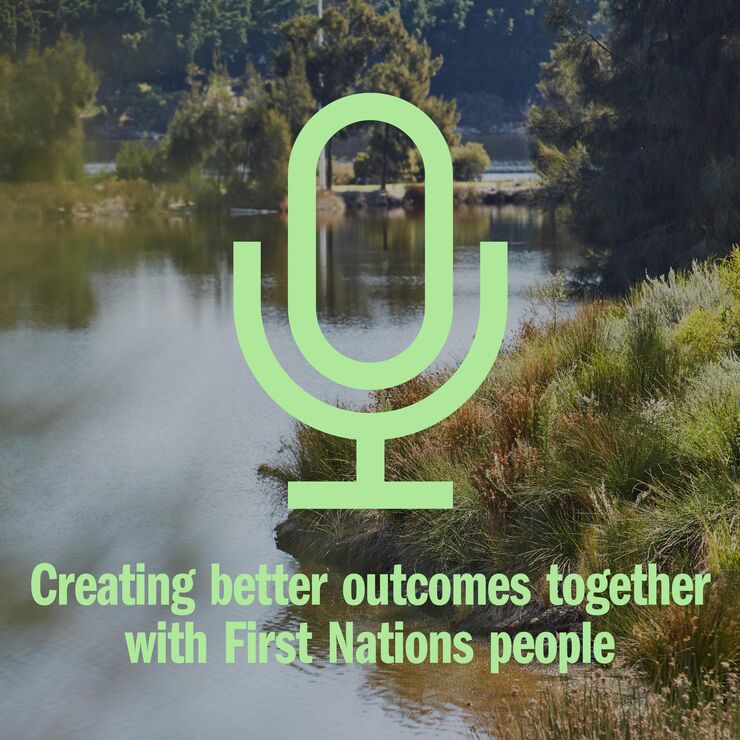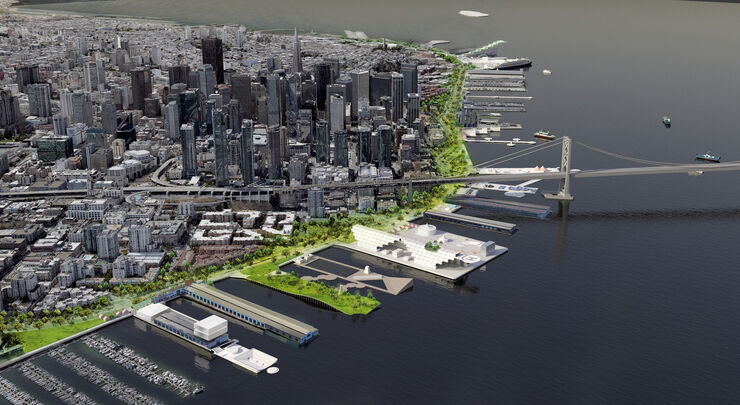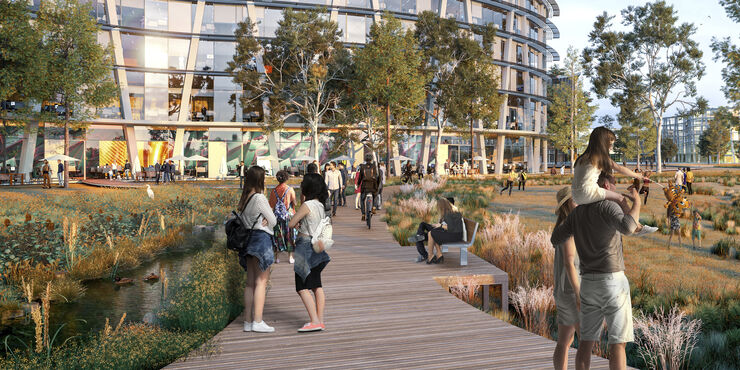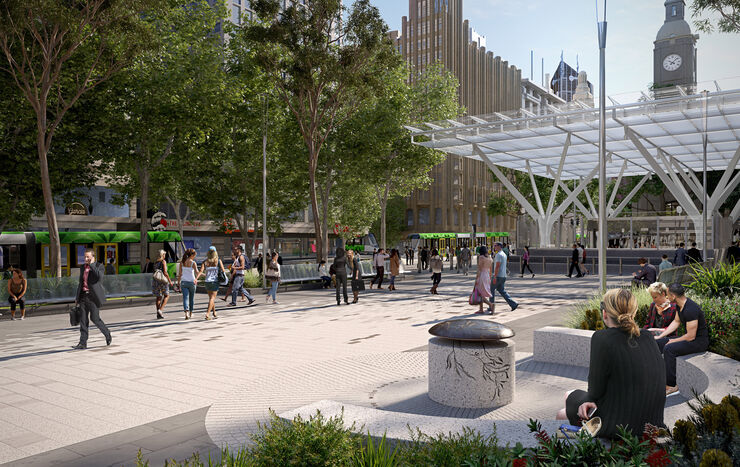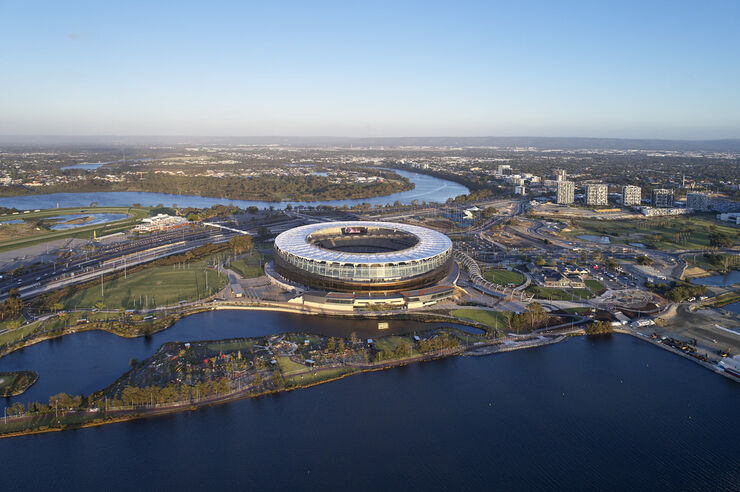Transcript
Matt Watson introduces the episode
Hi, you’re listening to Hassell talks. When place and meaning are so important in the built environment, how can designers support a deep understanding and respect for local indigenous culture? What are the experiences of indigenous designers in practise and how can non-indigenous designers engage in a culture they may not understand? I’m Matt Watson. You’re about to hear an excerpt from a conversation we hosted in our Melbourne studio with indigenous designers and consultants from Australia and Aotearoa New Zealand to help us understand ways we can aim for better outcomes for our indigenous communities and practitioners. But first, I acknowledged the Wurundjeri people who are the traditional caretakers of the country the Melbourne studio sits on acknowledging their elders past, present and emerging. One of our guests Sarah Lynn Rees is a Palawa Plangermaireener, woman from Northeast Tasmania. She’s a graduate of architecture at Jackson Clements Burrows, alongside roles with the national trust and Mpavilion here in Melbourne. I asked Sarah about indigenous representation and the Australian design industry and the experiences of indigenous designers, both at uni and out in practise.
Sarah Lynn Rees speaks:
I mean there are only eight registered indigenous architects in Australia. There’s probably about 20 people practising . Every single one of those people is involved in something that is trying to build knowledge and build capacity amongst our, I guess, the profession as a whole. Every opportunity that I’ve ever been afforded, and I’ve been incredibly lucky, has been because someone has come to me and said, Oh, you could do this. And someone believed in me before I believed in myself. And so that really needs to be embedded in the way that all stages of our education system work.
Anything you can do before university great, but from university indigenizing, our education system, so that when our young students walk into that university, they don’t feel like they have to leave their culture at the door. They feel like they’re represented. They feel like they can have critical debate about the topics that they’re presenting in their studios. They feel like there’s actually a nuanced understanding of the country that they’re on. There’s a presence of elders. There’s faces that they recognise and can see themselves in. Without any of those things, then our young students are not going to feel safe. They’re not going to feel they’re going to feel like they’re hitting themselves against a brick wall constantly because they’re going to exactly give they’re going to give as much as they can and they’re going to get nothing in return.
Matt Watson speaks:
Kyle Vander Kuyp is a Worimi and Yuin man from new South Wales. He’s the indigenous engagement manager for Australian firms schiavello. He also leads a schiavello ganbu programme, helping increase direct indigenous employment and participation across his workforce. At the beginning of our chat, we spoke about the importance of identity to indigenous designers.
Kyle Vander Kuyp speaks:
Yeah, yeah. Part of my role has been to recruit young, young people into schiavello and open up opportunities in apprenticeships and employment. But also one of the rewarding parts I’ve had is doing some cultural awareness sessions. And I’ve been able to deliver that to staff across the country, but they’ve been very, very rewarding sessions. I say at the start, I’m not going to cover all Aboriginal history and culture in, in an hour. If we had four days, I might just scratch the surface, but I’m introducing this to you.
And I wanted to give you some tools to understand why, why we’re at this point or why I’m employed at schiavello. So it’s sort of been a gift that I’ve actually been able to meet elders along my journey from being a young person who was trying to find my identity, trying to sort of build that self-esteem up. That to be indigenous is not going to be a disadvantage. It’s going to be an advantage, but you’ve got to use it. And that, that was sort of messages that I got from elders all the way through my upbringing. And I remember one of our last were Andree Queens. They called her Annie Winnie. She, she said, Kyle you, you will feel it on the inside. You’ll you’ll feel it. Don’t worry about how much knowledge you have at the moment or how much you’re going to have in the future, but you’ll feel it in your heart.
Matt Watson speaks:
New Zealand designer, Elisapeta Heta was also on the panel, I invited Elisapeta to talk about what the New Zealand experience can teach us about the value of partnerships with first peoples for better design outcomes. Elisapeta is well placed to comment, she’s on the board of the New Zealand Institute of architects as a representative of Ngā Aho - Aotearoa’s national network of Māori design professionals. At jazzmax she co founded Waka Māia, a group to embed a Māori perspective into the firm’s process and projects, and to drive its commitment towards being a bicultural practise. The change that Elisapeta and her colleagues have achieved in New Zealand is astonishing. I asked her to share what that engagement looked like in practise.
Elisapeta Heta speaks:
So part of the IP, I suppose, that jazzmax has developed and currently holds that sits with Waka Māia is the fact that we have developed a kind of a process and effectively the sum total of that is it’s really good. It’s a good ethical process. It Comes from a Māori worldview or point of view. And a lot of there is really about intrinsic understanding that we have as Māori people to navigate both Māori worldview in a [inaudible 00:05:58] or a non Māori perspective at all times. And part of the challenge now is teaching our non-Māori, people in Aotearoa how to also navigate backwards and forwards. And that’s turning into an interesting challenge. That process talks about a whole lot of things. It’s a lot of basic things like making sure that you are engaging with the right people, for starters remunerating people, but I don’t mean by money.
So that’s the wrong word, the word I want to use is koha, it’s a Māori word that talks about reciprocity. It talks about exchange. It means that when you are bringing Māori people to the table to ask them questions about their histories and their narratives, you’re not just taking from them. You are also finding ways to give back. It could be monetarily, but it could be a whole lot of other things. It also means that we use our tīkina or our protocols from a Māori perspective to help enable trusting environments. What that means is that, well, some simple things, actually things like starting meetings with [foreign language 00:07:14] , to clear the air, giving out a [foreign language 00:07:14] the people around the table, the opportunity to [foreign language 00:07:21]. So speak to the Māori, speak our language, to be able to say their peace.
And a lot of the time that means hearing their grievances in a safe and comfortable environment. And that’s not always easy for our project teams when they think they’re there to design a bus station, but they find out they’re there to hear about land claims from like, you know, 1930, but that’s actually a part of the process. It’s about it’s a lot to do with cultural safety.
Matt Watson speaks:
The landscape surrounding Perth’s Optus stadium was designed by Hassel to be a captivating year round destination. The strength of the team’s indigenous engagement process resulted in 41 hectres of landscape visitors to immerse themselves in nature and connect with local indigenous culture. Landscape architect, Nick Pierson lead the Hassel team on the Parkland project, I asked him to reflect on the process the team took with indigenous engagement and why process can be more important than project.
Nick Pearson speaks:
I was reflecting on it last night, reflecting on Perth stadium and why that worked and why other projects hadn’t worked. And it wasn’t, it wasn’t about the project type. It wasn’t about the size of the project. Wasn’t about the budget or the scale. It was the process. And on reflection, this there’s certain ingredients that are necessary for success. And one is time, time to build trust to, to allow that trust, to manifest into, really good conversation where cultural exchange happens and not just where we take, but we give and we share, and that cultural exchange is important, but it was also the authority for people to speak.
So on the Perth stadium, there was a terms of reference drawn up, which was that formal engagement system, but there was a long process to actually get the right people with within the [inaudible 00:09:11] working party. So there was four members appointed to that. Those four members represented all of the 16 apical ancestors. So all of the family groups within [inaudible 00:09:21] were represented amongst those four people. So they had the power to, to share stories sometimes in workshops, they would go, we really want to tell you this, but we need to, we need to refer to elders to, to get permission. And then the following workshop, they would share those stories. So it was a really positive process and we had a really good champion within that [inaudible 00:09:44] working party. One of the moments that I cherish the most through the indigenous engagement on, on the perth stadium project was actually once we built that trust and the conversations that happened, and one of the members of the [inaudible 00:09:57] working party actually shared the creation story with us, their creation story, and told it in the, in the most beautiful way with these really fantastic hand gestures.
And there was a couple of us of the design team there, and we just both looked at each other and just went okay, when we go back inside, you’re going to tell that again to the wider group. And he told it again, and from that a whole, a whole series of kind of further conversations transpired. And that became the, the narrative for the, for the, the Arbour to, to articulate spirit. And so that would have never happened if we didn’t have trust. And it never happened in a formal conversation process.
Sarah Lynn Rees speaks:
I mean, how does any project ever come into realisation? It goes through a process. It’s just that we’ve normalised our understanding of what the architecture process is. And working with communities with their own protocols and their processes and embedding them into ours is not something that at least Australia has achieved yet. And so, yeah, we focused on process a lot because that’s the bit that needs to change the procurement process, the design process, and then the process of engagement post the project, finishing all of those things need to be embedded with the local understanding of protocols or behaviour of sociopolitical context in order for them to be enacted and created in an appropriate way.
Elisapeta Heta speaks
One of the reasons why there is a another process you have to consider that isn’t just the concept in prelim. And that process is because you need to build trust and you need to get your team comfortable with the idea that trust is going to take time.
And, and that time sometimes doesn’t fit within your traditional model of, of, you know, you get chat. It’s, it’s really, it’s really because you have to find a way to enable that safety. And I think that’s partly some of the success of what [inaudible 00:12:06] been able to do is establish and maintain longterm relationships that extend well beyond projects, where we’re in communities, where as we like to say, you know, we’re out the back with the tea towel, doing the dishes. And literally sometimes I am out the back doing the dishes and that’s because I’m, I’m not building relationships to make good architecture, I’m building relationships to have good relationships with people and the good architecture they’ve really good built in outcomes as actually a, just a wonderful consequence of that
Matt Watson speaks:
With all this Context of mine, I asked the group what they hoped could be achieved in the next 12 months.
Nick Pearson answers:
From my perspective, I guess, as a practitioner in South Australia, I’d love to see in a year’s time that the South Australian government is starting to write, you know, indigenous engagement into brace, starting to set up the procurement process to provide that time, that time for the engagement to, to build trust and report currently doesn’t happen.
Kyle Vander Kuyp responds:
Yeah. That just, just the face of communities change in, in buildings and in design and, and have it come from them. What they want, not the three bedroom house, that’s a box. You know, there could be something different.
Elisapeta Heta responds:
Indigenous people have a tendency to think about things in 500 year plans. Not really one to five to 10, if we could get a few more students through the doors of practises, if we could. Yeah. Tell our stories if we could continue to have these conversations, because I think we’ve got a lot to learn and share, and I’m pretty sure on this, you know, 60,000 year history, we’ve, we’ve done a bit of sharing.
Sarah Lynn Rees responds:
I would like to see the stories of projects told from the beginning by architects sharing the voice with traditional owners about how projects that are perhaps more appropriately conducted have come to life and being honest about what worked and what didn’t work and that being shared with the architecture community. So everybody can learn. We tend to gatekeep knowledge within the profession. We all tend to try and have our own processes that we don’t share with anyone else, because that makes it competitive. But in this particular sector, I don’t think we can afford to do that. I think everybody needs to share what they’ve learned so that everybody else can benefit from it.
Matt Watson concludes:
Enormous, thanks to Sarah, Elisapeta, Kyle, and Nick for sharing their experiences and stories with us with trust and openness in this forum. This is Hassel talks. I’m Matt Watson. Thanks for listening.

